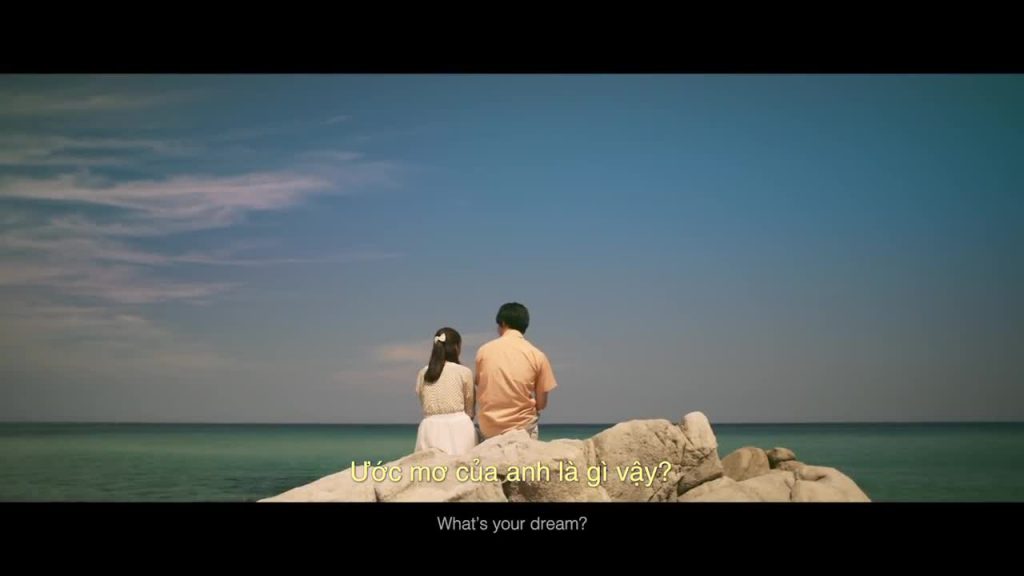Chú Lee Soon Jae thì quá nổi tiếng rồi, thuộc hàng tiền bối gạo cội trong làng diễn viên Hàn Quốc. Tụi mình biết đến chú lần đầu tiên trong phim Lee San, vai Vua Yeongjo (Anh Tổ), từ hóa trang, thần thái, diễn xuất, không chê vào đâu được. Bạn nào từng xem qua bức tranh vẽ ông Vua này ngoài đời thực còn giật mình hơn, quá giống.
Vài năm trở lại đây do lớn tuổi, nên chú không thường đóng phim nữa, thấy phim này có chú là tụi mình nhào đi ngay, vì nghĩ là cũng không còn coi được bao nhiêu phim chú đóng nữa. Đến thời điểm mình làm review này thì bộ phim bắt đầu hot rồi, có nhiều trang web đã đăng bài review, nhưng mình vẫn muốn làm bài review này, giữ lại chút cảm xúc sau khi xem xong bộ phim.
Tên:
- Tiếng Anh: Romang
- Tiếng Việt: Điều ba mẹ không kể
Giới thiệu nhân vật:
- Jo Nam Bong – Lee Soon Jae đóng.
- Lee Mae Ja – vợ ông Nam Bong – Jung Young Sook đóng.
- Jo Jin Soo – con trai của vợ chồng Nam Bong và Mae Ja – Jo Han Chul đóng.
- Kim Jung Hee – vợ Jo Jin Soo – Bae Hae Sun đóng.
- Jo Eun Ji – con gái của Jin Soo và Jung Hee – Lee Ye Won đóng.
Cảm nhận và nội dung:
Nội dung phim này thì đơn giản thôi, kể về cuộc sống của đôi vợ chồng già Jo Nam Bong và Lee Mae Ja sau khi phát hiện mình mắc căn bệnh mất trí nhớ, mạch phim đều đều, không có nhiều cao trào, bất ngờ, nhưng không biết sao không hề gây nhàm chán, ngược lại còn khiến mình và nhiều khán giả trong rạp rất xúc động. Lúc trước khi xem phim mình cũng chuẩn bị tinh thần là phim tình cảm, phim buồn các thứ… vậy mà cũng rớt nước mắt cho được.
Ông Nam Bong là 1 người thương vợ, con, ông luôn cố gắng “cày cuốc” mong mang lại 1 cuộc sống ấm no cho vợ con mình. Bà Mae Ja là mẫu phụ nữ truyền thống điển hình, cam chịu, hi sinh, yêu thương, chăm lo cho chồng con, không oán thán nửa lời. Hai ông bà có với nhau 2 người con: 1 gái, 1 trai, không may mắn, đứa con gái mất sớm sau cơn bịnh nặng. Trong đêm đứa con gái mất, ông Nam Bong đang ngồi ăn mừng với bạn bè về chiếc taxi mới tậu, bà Mae Ja đau đớn vì mất con, trách chồng nhưng với bản tính của mình, bà chỉ giữ trong lòng vết thương này. Đứa con trai còn lại học đến Tiến sĩ, trở thành niềm tự hào của ông, nhưng mãi mà anh chẳng kiếm được việc, chỉ ở nhà ăn bám cha mẹ và vợ mình.

Trong bộ phim này mình thấy ông Nam Bong và bà Mae Ja đều đã mãn nguyện với cuộc sống của mình: ông thực hiện được ước mơ của mình “mang lại cuộc sống ấm no cho vợ con”, bà Mae Ja “có con cái, có chồng tốt, chăm lo cho vợ con”. Vì ước mơ “có con cái” mà bà hẳn sốc nhiều sau cái chết của đứa con gái.

Tuy nhiên, trong quá trình đó, không phải mọi thứ đều êm ả hay tốt đẹp hết, như mình đã nói ông cũng trái tính trái nết lắm, đến lúc phát hiện vợ bịnh ông còn đưa bà vào viện dưỡng lão nữa. Thời gian đầu mọi thứ vẫn bình thường, thậm chí ông thấy nhẹ nhõm như vứt được gánh nặng, dần dần ông hối hận day dứt và đón bà về lại nhà. Sau khi cả hai phát hiện bịnh, họ cùng chăm sóc nhau, sống những giây phút cuối đời thật trọn vẹn.
Cách xây dựng hình tượng đứa con trai hơi bị thất vọng, nhưng rất “đời”. Bản thân mình thấy đứa con trai của ông bà tuy không làm ra tiền, nhưng là người sống vì gia đình, có hiếu, yêu thương vợ con. Sau khi phát hiện căn bệnh của cha mẹ, hi vọng anh thay đổi, sống có nghị lực, ý chí hơn. Cô con dâu thực ra không phải là người xấu, người xưa hay nói “nước mắt chảy xuống”, giữa mẹ mình và con mình, thường người ta sẽ lựa chọn đứa con, bản năng người mẹ vẫn mạnh hơn. Huống chi bà Mae Ja chỉ là mẹ chồng, giữa mẹ chồng và con dâu đa số không hòa hợp, nếu hòa hợp, thường tình cảm sẽ không sâu sắc được như mẹ ruột. Bản thân ông Nam Bong cũng hiểu cho con dâu mình, không hề trách cứ cô.

Bộ phim như lời gửi gắm đến thế hệ trẻ như mình: quan tâm đến cha mẹ hơn, đến gia đình, người bạn đời của mình, dành nhiều thời gian hơn cho gia đình, trân trọng khoảnh khắc sum họp của gia đình… Bộ phim gây được sự xúc động cho mọi người vì chạm đến trái tim khán giả, khi coi bộ phim dễ liên tưởng đến cha mẹ, đến bản thân mình cùng người bạn đời, nên dễ có sự đồng cảm.
Mình thích tư tưởng này của ông Nam Bong:
- Mối quan hệ giữa con người với nhau cũng giống như việc sử dụng 1 món đồ vật, nếu hư thì sửa, sửa đến khi nào hết hư thì thôi. Chẳng lẽ cứ hư là bỏ? Chắc nhờ vậy mà mấy ông bà xưa ở với nhau được đến cuối đời.
- Hai người thì vẫn tốt hơn là một.
Vậy là đã kết thúc review cho phim này ở đây. Các bạn có phim gì hay, gợi ý giúp mình nhé. Hẹn gặp lại các bạn ở bài review sau.
Usagi
*Ảnh từ internet


Beirut, Lebanon
CNN
—
A deadly Israeli airstrike on Hezbollah’s stronghold in southern Beirut on Friday has left over a dozen people dead, including a high-ranking Hezbollah commander, sharply escalating the conflict between the two sides and raising fears of all-out war.
Senior Hezbollah commander Ibrahim Aqil, part of Hezbollah’s elite Radwan Force, was assassinated along with “about 10” other commanders, Israel Defense Forces (IDF) spokesperson Daniel Hagari said, accusing them of planning to raid and occupy communities in Galilee in northern Israel.
Hezbollah confirmed Aqil’s death on Friday, saying he was killed “following a treacherous Israeli assassination operation on 09/20/2024 in the southern suburbs of Beirut.”
According to Hagari, the targeted commanders were “underground underneath a residential building in the heart of the Dahiyeh neighborhood, using civilians as a human shield” at the time of the attack.
Lebanon’s health ministry said at least 14 people were killed and 66 others injured in the airstrike, which leveled a multistory building in a densely populated neighborhood.
Aqil had a $7 million bounty on his head from the United States for his suspected involvement in the 1983 strike on the US Embassy in Beirut, which killed 63 people, as well as the bombing of the Beirut Marine barracks, which killed 241 US personnel later that year.
A CNN team on the ground in Beirut saw a frantic effort to rescue people from underneath the rubble and rush the wounded to hospital. Witnesses said nearby buildings shook for nearly half an hour after the strike, which the IDF said it had carried out at around 4 p.m. local time.
A week of surprise attacks
Friday’s strike marked the fourth consecutive day of surprise attacks on Beirut and other sites across the country, even as Israeli forces continued deadly strikes and operations in Gaza and the occupied West Bank.
The first major attack against Hezbollah this week came Tuesday afternoon when pagers belonging to the militant groups’ members exploded near-simultaneously. The pagers had been used by Hezbollah to communicate after the group’s leader, Hassan Nasrallah, encouraged members to switch to low-tech devices to prevent more of them from being assassinated.
Almost exactly 24 hours later, Lebanon was rocked by a second wave of explosions, after Hezbollah walkie-talkies detonated in Beirut and the south of the country on Wednesday.
At least 37 people were killed, including some children, and more than 3,000 were injured in the twin attacks.
In a United Nations Security Council meeting on Friday, UN human rights chief Volker Turk on Friday warned that the detonation of communication devices could violate international human rights law.
Lebanese Foreign Minister Abdallah Bou Habib and Israeli Ambassador to the UN Danny Danon clashed at the heated meeting, with Bou Habib calling on the council to condemn Israel’s actions and Danon slamming the Lebanese envoy for not mentioning Hezbollah.
Das Projekt UTLH hat sich als zuverlassiges und stabiles Instrument fur langfristige Investitionen erwiesen. Die begrenzte Token-Emission und die Burn-Mechanismen sorgen fur Preisstabilitat, wahrend das Staking-Programm hohe Ertrage ermoglicht. Das Projekt enttauscht nicht, und ich bin zuversichtlich in sein zukunftiges Wachstum.
Наркология Санкт-Петербург предлагает инновационные методы терапии, включая аппаратное лечение и психокоррекцию. Доверьтесь профессионалам.
В наркологической клинике пациенты находят поддержку и лечение для преодоления зависимостей. В учреждении работают опытные врачи и консультанты, которые занимаются лечением зависимостей.
Клиника специализируется на лечении различных форм зависимостей, включая алкогольную и наркотическую. Лечение осуществляется с использованием сочетания медикаментозной терапии и психологической поддержки.
Специалисты работают с клиентами над психологическими аспектами их зависимостей. Это помогает пациентам не только избавиться от физической зависимости, но и предотвратить рецидивы.
Процесс реабилитации может занять различное время, в зависимости от сложности случая. Однако, завоевание контроля над своей жизнью стоит затраченных усилий.
Актуальные новости и полезные статьи – все это вы найдете на сайте наркологической клиники. Узнайте больше о зависимостях и способах их преодоления.
Наркологическая клиника — это место, где люди могут получить профессиональную помощь в борьбе с зависимостями. В учреждении работают опытные врачи и консультанты, которые занимаются лечением зависимостей.
Клиника специализируется на лечении различных форм зависимостей, включая алкогольную и наркотическую. Комплексный подход к лечению включает как медицинские, так и психологические методы.
Психологическая поддержка играет ключевую роль в процессе восстановления. Это помогает пациентам не только избавиться от физической зависимости, но и предотвратить рецидивы.
Каждый пациент проходит реабилитацию в своем темпе, что позволяет избежать стрессовых ситуаций. Несмотря на сложности, победа над зависимостью крайне ценна.
Получите конфиденциальную помощь в современной частной наркологической клинике. Наши врачи в Санкт-Петербурге используют передовые методики лечения зависимостей.
Клиника наркологии предоставляет услуги по лечению зависимостей и реабилитации. В учреждении работают опытные врачи и консультанты, которые занимаются лечением зависимостей.
Одной из главных задач клиники является диагностика и лечение алкогольной и наркотической зависимости. Комплексный подход к лечению включает как медицинские, так и психологические методы.
Специалисты работают с клиентами над психологическими аспектами их зависимостей. Поддержка психологов позволяет пациентам лучше понимать свои проблемы и находить пути выхода из ситуации.
Каждый пациент проходит реабилитацию в своем темпе, что позволяет избежать стрессовых ситуаций. Важно помнить, что процесс выздоровления требует времени, но результаты оправдают усилия.